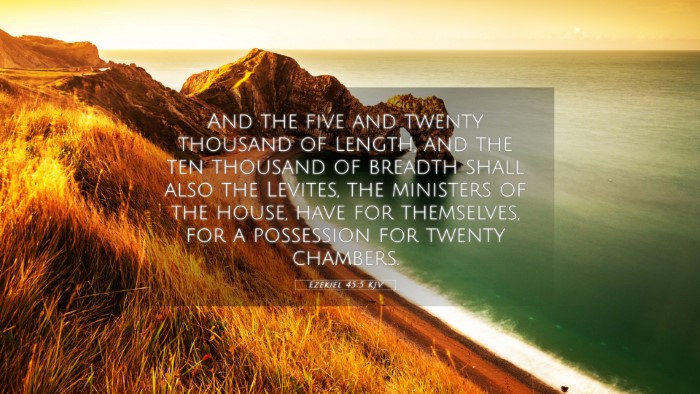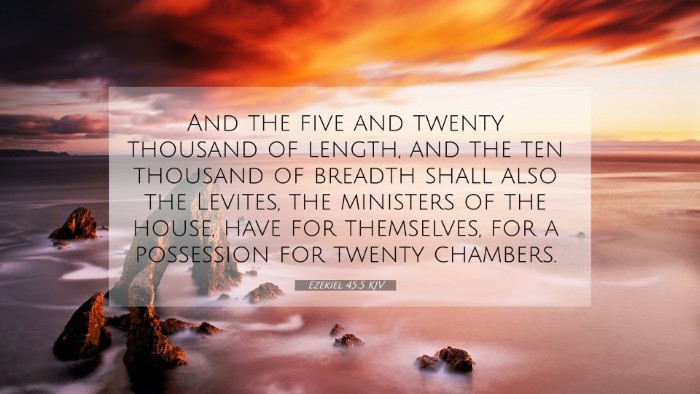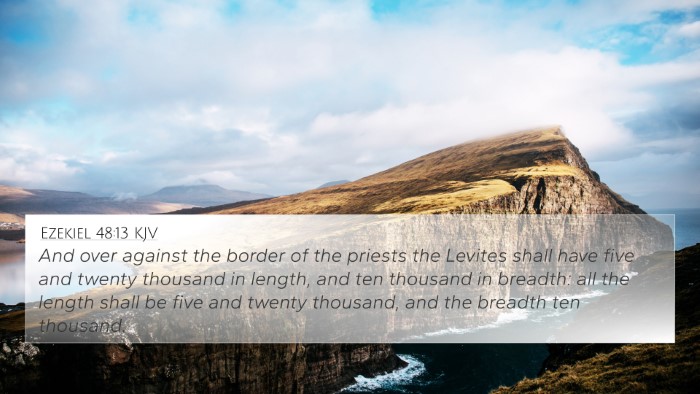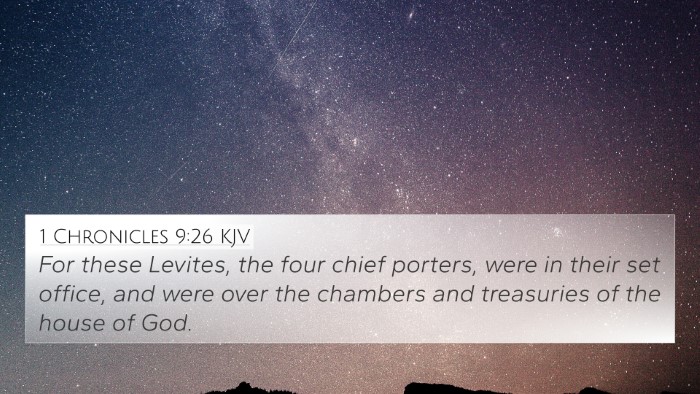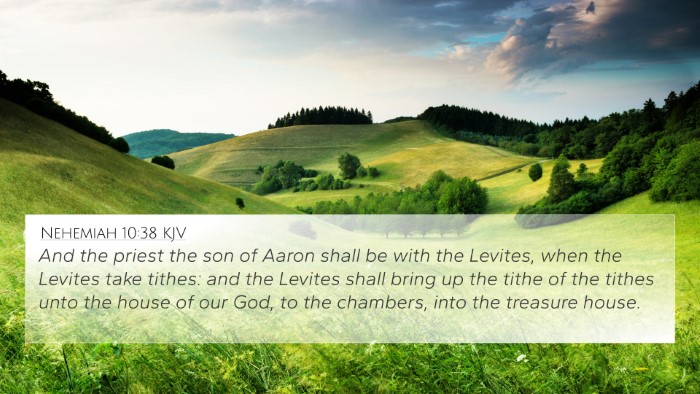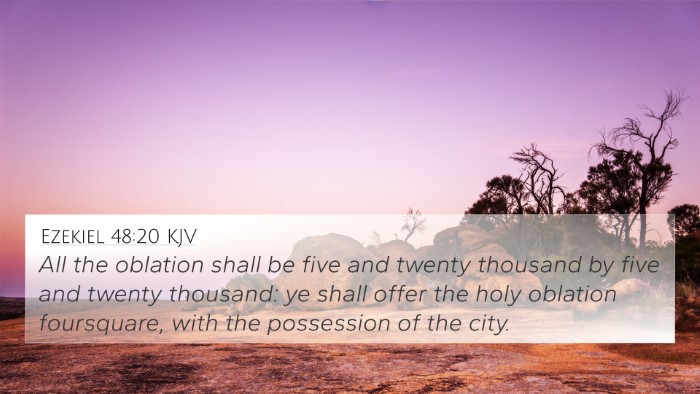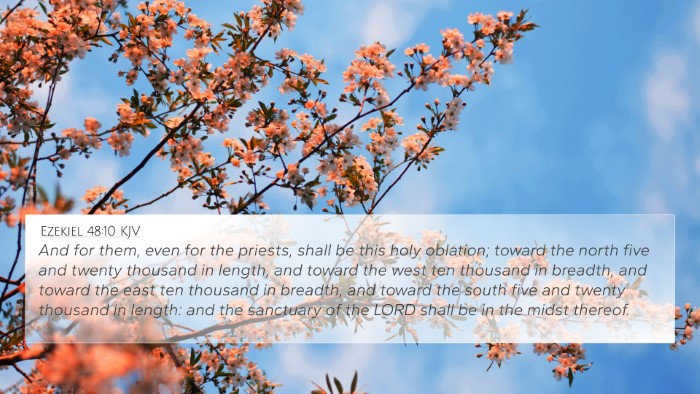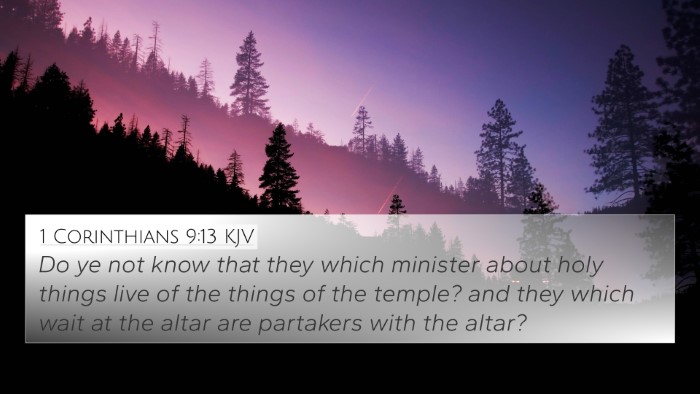Ezekiel 45:5 - Understanding the Verse
Ezekiel 45:5 states: "And the five and twenty thousand, that are to be the length of the holy portion, and ten thousand in the breadth." This verse is part of Ezekiel's detailed vision regarding the division of the land of Israel among the tribes, particularly focusing on the sacred space designated for worship and the city of Jerusalem. The measurement of this holy portion stresses the significance of designated areas for God’s service and the holiness attributed to them.
Historical and Theological Context
This verse belongs to a larger prophetic vision provided to Ezekiel during the Babylonian exile, emphasizing God's covenantal relationship with Israel. The chapter details specific allocations for the sacred area, the city, and surrounding territories. This reveals the reestablishment of worship practices and the physical reminders of God's presence among His people.
Commentary Insights
- Matthew Henry: Henry emphasizes that this portion illustrates God's commitment to His people. It reflects a well-ordered society under divine guidelines where worship and service are prioritized. He notes that precise measurements symbolize the holiness and separateness of the Lord’s portion.
- Albert Barnes: Barnes discusses the significance of the numbers presented. The dimensions indicate not just physical boundaries but a spiritual framework meant to foster a deeper relationship with God. He points out that these proportions have a symbolic nature, aligning with God's desire for order in worship.
- Adam Clarke: Clarke articulates how these divisions serve as a reminder of God’s sovereign rule and the importance of maintaining a holy space for communal worship. His commentary highlights how this allocation serves to reinforce the identity of Israel as a chosen nation, tasked with living according to divine principles.
Connecting Scriptures
There are several Bible verse cross-references that enhance our understanding of Ezekiel 45:5:
- Numbers 34:1-12: Establishing boundaries for the land of Canaan underscores the importance of designated holy spaces.
- Deuteronomy 10:9: The Levites were given no inheritance among the tribes, which reaffirms their role centered around God's service and the land distribution.
- Nehemiah 11:1-2: The principle of setting aside places for worship and service echoes through Ezra and Nehemiah’s recounting of communal restoration.
- Hebrews 12:22-24: The concept of a heavenly city reflects the spiritual dimensions of God’s kingdom, connecting Old Testament holiness with New Testament blessings.
- Matthew 5:14-16: Jesus emphasizes the visibility and influence of God's people, akin to the set-apartness of the holy portion described in Ezekiel.
- Ephesians 2:19-22: As believers, we are all together part of a holy temple for the Lord, indicating the expansion of the idea of sacred space from physical to spiritual.
- Revelation 21:2: The new Jerusalem is a continuation of this theme, where God dwells among His people in holiness.
Thematic Connections
Ezekiel 45:5 engages in a broader thematic dialogue found throughout Scripture. This verse connects to:
- Holiness: The emphasis on sacred dimensions invites further exploration of what it means to be holy and how that is lived out in community.
- God’s Sovereignty: Measurement and allocations highlight God's authority over His creation and His intention for order.
- Worship and Service: The setting apart of a holy portion symbolizes the priority of worship in the life of believers.
Cross-Referencing Methods
Engaging with Ezekiel 45:5 through a cross-reference Bible study can reveal deeper understanding. Here are tips on how to effectively utilize cross-referencing:
- Use a Bible concordance to find instances where similar themes, such as holiness or divine allocation, are discussed.
- Identify parallel verses that illustrate similar teachings regarding land, worship, and holiness.
- Apply Bible chain references to see how passages connect through overarching biblical themes.
- Study links between the Old Testament and New Testament to see how teachings about God’s holiness evolve.
Conclusion
Ezekiel 45:5 serves not just as a historical directive but also as a relevant spiritual lesson for contemporary believers. Understanding this verse through public domain commentaries enriches our comprehension of scripture. By utilizing tools for Bible cross-referencing, believers can derive significant insights that enhance their faith and worship practices.

